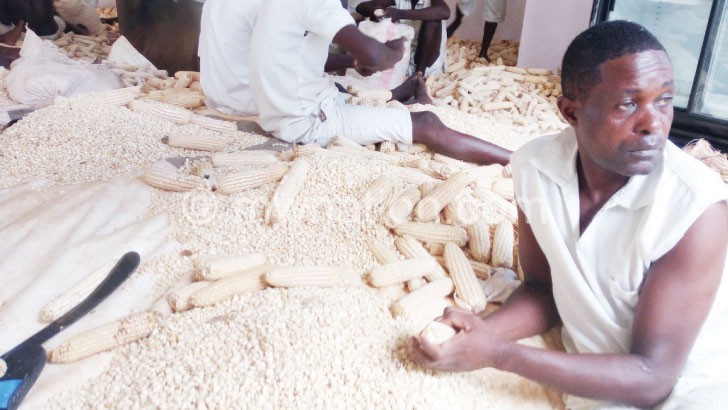Hunger figures exaggerated—PCA
The Parliamentary Committee on Agriculture (PCA) believes the figure of people who would face starvation and the tonnage of maize that the country produced in the 2015/2016 growing season were wrong.
But Ministry of Agriculture Principal Secretary Erica Maganga did not respond to our questionnaire, saying she had not been in office since Monday.
PCA chairperson Joseph Chidanti Malunga told Weekend Nation on Tuesday there are huge disparities between government data, suggesting there is more maize in the country than previously reported.

In its assessment, PCA said the availability of local maize for sale to the National Food Reserve Agency (NFRA) and lack of heavy traffic in State grain trader Agricultural Development and Marketing Corporation (Admarc) markets is an indication that the country has more maize than previously thought, a few months before some farmers start harvesting the new crop.
People are shunning Admarc maize, which is selling at K12 500 per 50 kilogramme (kg) bag, opting to buy from vendors who are selling the same quantity at between K11 500 and K12 000.
Said Malunga: “If you look at the figures that were given of people who would face starvation versus the tonnage of maize that the country had purportedly produced in the 2015/2016 growing season, you would see huge disparities, which show that on the ground, there is a lot of maize than previously reported.”
He added: “All this confusion is being created by Mvac [Malawi Vulnerability Assessment Committee] whose methodology for gathering data is questionable apart from being handled by people outside the agriculture field.”
Updating journalists on the hunger situation in the country on November 16 2016 in Lilongwe, Minister of Agriculture, Irrigation and Water Development George Chaponda said a second Mvac report showed that 6.7 million people would need emergency food assistance until the start of the next harvest.
Said Chaponda: “After the first phase, it was discovered that 6.5 million people are food insecure, but recently Mvac conducted another study and discovered an additional 200 000 food insecure people.”
In the wake of the purported deficit, government through Admarc, planned to meet 400 000 metric tonnes from Zambia and other countries.
The corporation arranged to buy 100 000 metric tonnes from Zambia, but it has so far only imported about 4 000 metric tonnes from there.
Malawi’s annual national maize requirement for domestic use is 2.98 million metric tonnes, according to the 2015/16 Ministry of Agriculture Food Security national food balance sheet.
Malunga’s sentiments come amid a flurry of questions on the procurement of maize from Zambia which has landed Admarc in trouble for flouting procurement procedures.
But an agriculture expert Tamani Nkhono-Mvula has defended the Mvac figures, saying the national food gap and food requirement and what to import is done by another body—the Agriculture Production Estimates Survey (Apes)—which is conducted by the Ministry of Agriculture, Irrigation and Water Development.
In an interview Mvula said on Tuesday that while the Mvac figures were being questioned, the decision-making on food assistance may be under or overestimated as most humanitarian organisations base their support on Mvac figures and not Apes.
“In this whole saga, I have a feeling that Mvac did a very good job. There is, however, some areas that Mvac needs to improve as pointed out by the committee. [But] when we talk about the national food gap and food requirement, it is the Apes that does that and the decision to import and how much to import is mainly based on Apes results because they are the ones that provide the overall food surplus or deficits.”
Mvula said: “The decision to import maize was necessary taking into consideration that there were reports of production deficits as stated in the crop estimates. However, we feel that the decision to import and what amount to be imported was made without taking into consideration the locally available stocks and also the ability of our private traders to import and also produce under irrigation.”
The Ministry of Agriculture, Irrigation and Water Development second-round Apes had indicated that the country produced 2.4 million metric tonnes of maize during the 2015/2016 agriculture season, 1.58 million metric tonnes lower than the 3.98 million metric tonnes produced during the previous agriculture season.
The Government of Malawi appealed for assistance from international humanitarian agencies to help feed the people in dire need of food aid. n





